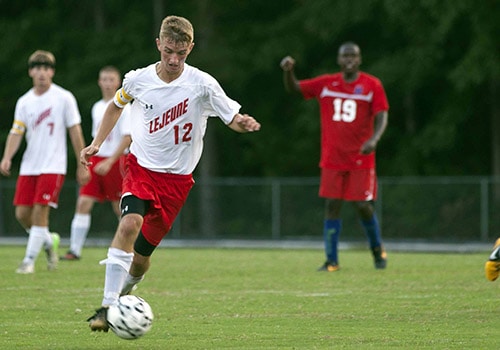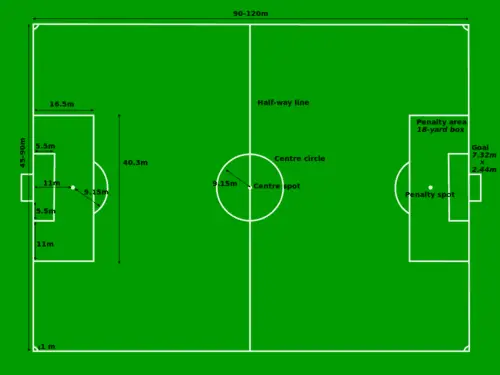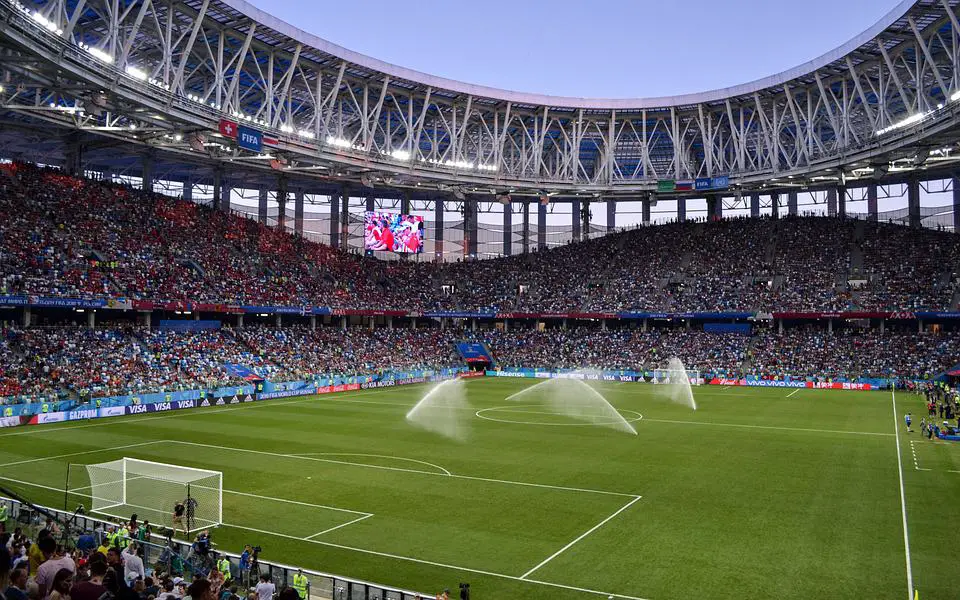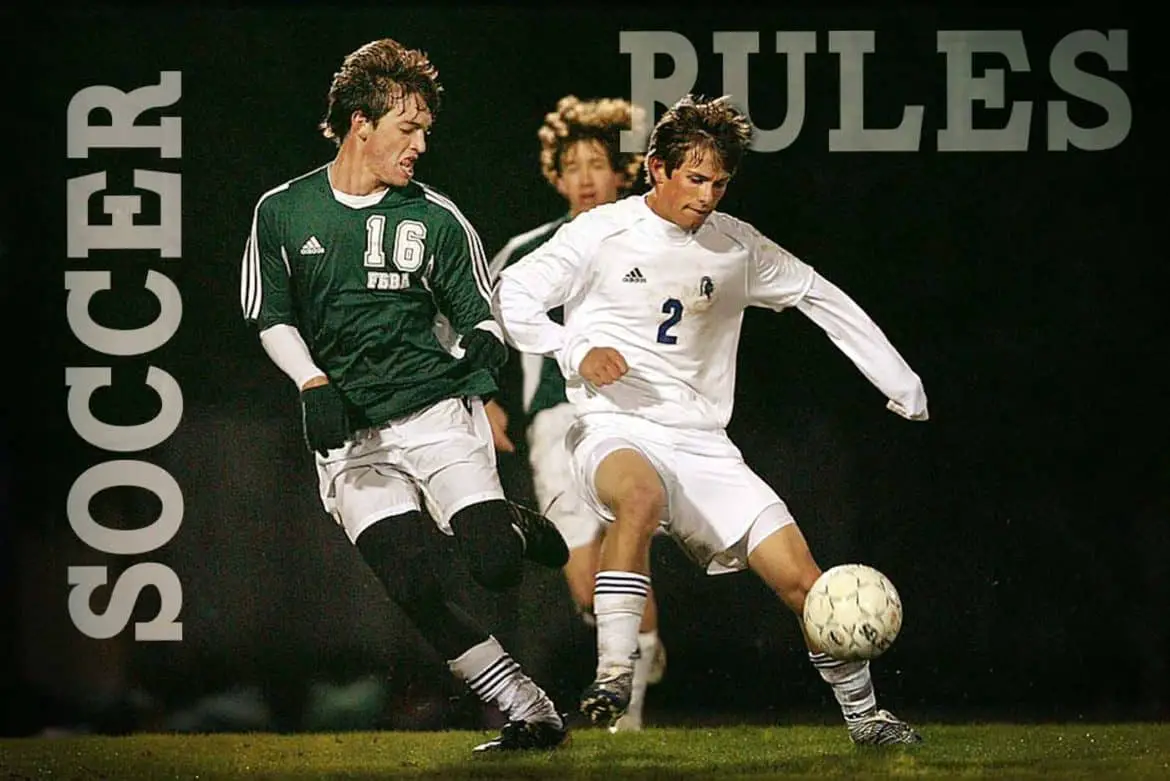Soccer, also known as football or association football in other parts of the world, is easily one of the most well-known sport in the world, with the World Cup garnering billions of views worldwide. While most Americans might puzzle over this, the truth of the matter is that because of the accessibility and simplicity of soccer, this particular sport is accessible for even some of the most poverty-stricken areas of our world. Having been able to serve in a couple of refugee camps around the world, playing soccer is always our go-to when we want to cheer up the kids or the adults. It is quite amazing how much joy and camaraderie this sport can inspire in the midst of terrible circumstances. It also astonishing how well everyone knows the rules and that even in a pick-up game, most of the rules are taken very seriously, along with how each player is supposed to play. So whether you are trying to keep up with some local pick-up games, just starting out, or refreshing your understanding of the rules, here is a brief overview of soccer.

Equipment
Let’s start out simple. You’ll only need a few things to play soccer. First, you need a soccer ball, which is easy to find and can be distinguished due to its circumference being made of pentagon and hexagon shapes, although the newest batches of high-caliber balls don’t carry the tell-tale geometric patterns. The sides are always plastic and the ball is relatively light, especially compared to a basketball or football.
Second, you’ll need cleats, especially if you plan to play competitively. These can be distinguished from baseball cleats by their shorter, mostly plastic spikes and the fact that the shoe slopes in an almost perfect line from shin to toe- this is to provide for a flat, even surface on which to handle the ball. These can be expensive but are a worthy investment, not only for your feet but also for your game.
The rest of your kit, the slang term for your soccer gear, will depend on your level of play. If you are playing competitively then you will definitely need a jersey, shorts, socks, and shin guards. If you are a goalie than you’ll also need goalie gloves.
Field Layout
Now that you have the equipment, you’ll need a place to play. Literally anywhere can be turned into a soccer pitch or field, but when playing in a regulated game, the pitch has some distinctive qualities. A soccer field must always be rectangular, with the goals being on the shorter sides. A typical pitch for an international adult male game has a length in the range of 110 m (120 yds) and a width in the range of 75 m (80 yds). Side Note: almost all measurements for soccer are in metrics because the regulating governments for the sport lie within Europe.

Some things to note about the pitch before going forward are the halfway line and the penalty/goalie box; these will be important later on when we talk about certain players.
Players: Positions and Responsibilities
There are four main positions in soccer: Goalie, Striker/Forward, Midfielder, and Defender. One interesting thing to note about soccer is that there is technically only one position dedicated to offense, which is the Striker, or Forward. The Goalie and Defenders are devoted to defense, while the Midfielders must split their time between offense and defense, leaving the Striker the responsibility of scoring. Its no wonder that soccer characteristically has low scoring games.
Forward:
Within this position, there are a few other specific positions, like a Center Forward, Second Striker, and Winger. As a whole, the Forwards are in charge of scoring. They typically stay on the side of the field that is closest to their opponents’ goal so that they can always be ready to score, and so that they are out of the way of the defenders. If one is a Second Striker, they usually are there to assist the Center Forward in scoring. If one is a Wing player than they are responsible for moving the ball down the opponents’ side of the field on the wings, or sides. All of these actions are taken with attempting to score in mind, so whether you are a Center Forward or Winger, your job is to score.
Midfielder:
As the title suggests, these players play mostly in the middle of the field. Every midfielder is responsible for helping their own team’s defense to keep the opposing team’s offensive players away from the goal, passing the ball up to the offensive branch of their own team, so that their team can score, and even at times driving down the field to score if the opportunity arises. That being said, depending on the talents of a particular midfielder, he or she could be tasked with staying back on defense or going forward on offense. Most teams play with somewhere between 3 to 5 players allocated to be midfielders, so usually one or two are told to be a Defensive Midfielder, a midfielder focused more on defense than offense, an Offensive Midfielder, or a Center Midfielder. Something special about a Center Midfielder, if a team chooses to place someone in this position, is that he or she acts similarly to a Point Guard in Basketball, in that since he or she can see the whole field from their position in the center, they are tasked with keeping the pace and flow of the game for their perspective team.
Defender:
Again the titles are less than imaginative, but I think that helps in the long run as these positions are not as hard-and-fast as positions are in other sports; they are much more elastic. Defenders are in charge of defending their side of the field from the offensive members of the opposing team. They do this by pressing the offense, attempting the steal the ball, and having a formation that counters the strategy of the other team. Most of the defenders stay on their side of the field so that they are always ready to stop the other team’s advancement, but sometimes a defender is put in the wing position and actually acts more like a Winger in that they help move the ball down the sides of the field, assisting the offense.
Goalie: While I think this position is self-explanatory, it is pertinent to add that goalies are allowed to handle the ball with their hand on the field, as long as they are within the penalty box in front of their goal.
Rules and Violations
Before getting into some of the ins and outs of the rules, lets first cover how the actual game runs. The game is 90 minutes long, which is broken into two 45 minute halves. During these two halves, the clock doesn’t stop, unless the stadium is on fire or something, and even then, it had better be a pretty big fire. Due to this, the head referee can add time to the end of the last half to make up for the time that he or she feels was wasted during the game due to injuries or delaying tactics by the two teams.
No more than 11 players can be on the field at one time, including the Goalie, and no less than 7. This may seem like a lot of players, but due to a substitution rule, once a player is substituted, they cannot be put back into the game. So when a coach substitutes a player, it is literally a game-changer, as that new player will change the pace and focus on the game, based on their position, whether they are a Forward, Midfielder, or Defender.

As with all sports, there are a lot of rules, and the more advanced the play, the more nuanced the rules become. Almost all regulated soccer matches abide by the Laws of the Game, which have actually been around since the mid-1800s. Wikipedia has a very comprehensive explanation of the 17 Laws, which can be read in-depth here. Some of these rules are widely known, like how players are not allowed to touch the ball with their hands, except under special circumstances, and if one team kicks the ball out of bounds then the other team gets to put it back into play. Other rules are less known, like the different types of kicks and how Offside works. Due to the brevity of this article, these rules can’t be explained at length. I suggest you check out the Wikipedia articles for in-depth explanations of the rules, this article for a better explanation of the different ways to put the ball back into play, and this video that demonstrates how Offside works.
Strategies
Which position you play will depend on a ton of different factors: like your personal skills, your coach, team, field, and the other team, just to name a few. The most common arrangement for a team is to have a 4-4-2 arrangement, 2 Forwards and than 4 Midfielders and Defenders respectively. As I previously stated, depending on the team, a coach might choose to have more defenders and arrange his team in a 5-3-2, or even a 5-4-1. Other aggressive coaches might choose to lean heavier on the offensive and run a 3-4-3 game, in reality, the options are endless and since the positions are pretty fluid, players can shift between most positions pretty easily.
I hope this article was helpful and will inspire you to go out and enjoy a pick-up game with friends soon!

